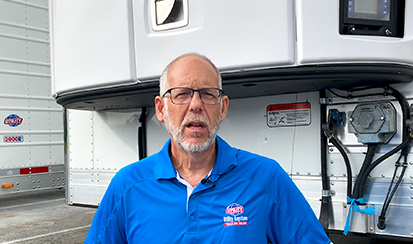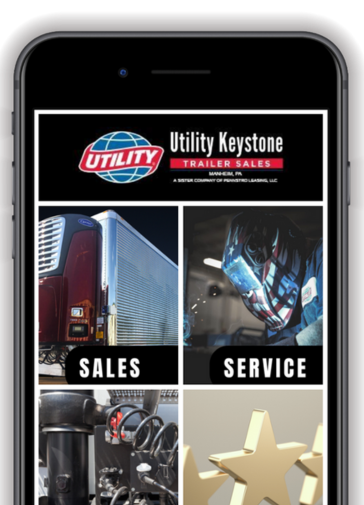Multi-Temp Trailer Interior and Exterior Lighting
Interior Lighting on a Multi-Temp
There has been significant innovation and technological improvement in trailer interior and exterior lighting. Including LED lighting to create a bright environment for your driver to work inside the trailer.
Automatic Timers and Passive Infrared Sensors
In the old strategy, you would go around the nose box on the trailer’s front, hit a button, and the lights would come on. You would hit that switch again to turn the lights off when done.
We now recommend a series of timers and passive infrared sensors for turning your lights on and off.
- The Electronic Timer: The lights turn off with the electronic timer setting or when the physical activity stops inside the trailer.
- Infrared Sensor: The light will turn back on when the heated physical body is detected and stay on for the length of time they’re programmed to stay on.
Rear Work Area Lighting

Rear exterior lighting options are available for safe loading and unloading operations.
- Work area lights: Work area lights can be put outside the back of the trailer or at the trailer’s side doors.
- Reverse Lights: Some work area lights can serve the dual purpose of work and reverse lights. Be sure to ask your trailer salesman about wiring these rear work lights to assist your driver in backing into docks at night and in difficult situations.
Rear light power controlled with the braking and ABS systems
- Typically with a rear liftgate, you ll have a header light used as a work light.
- If you use a passive infrared sensor to turn on a rear work light, you must be sure the light is turned off while driving, or you’ll violate the law.
- Wiring the rear work lights to the GPS’s braking system gives your driver control in turning off a rear passive infrared sensor light.
* You need to discuss and finalize these issues before you build your trailer. For more information on trailer interior and exterior lighting, don’t hesitate to contact your trailer sales specialist.
Read more in this series, How to Buy the Best Reefer Trailer.
- How to Buy the Best Reefer Trailer
- Spec’ing a High Cube Trailer
- Deep Frozen – Spec’s and Options
- Spec’ing a Reefer Trailer for Hauling Produce
- Standard Reefer Trailer Spec’s
Options and Upgrades to a Standard Reefer Trailer.
- Insulation, Lights, and Stainless Steel Options
- Wearband, Securement, and Side Panel Options
- Tires, Wheels, Suspension and Brake Options
- Heavy Haul Specs
- Lightweight Savings
Multi-Temp Design Strategies and Perspectives for Single Temp Operators.
- Temperature Ranges and Zones in a Multi-Temp
- Heat Evaporator – Placement and Airflow
- Multi-Temp Remote Control and Shore Power
- Dimensions of a Multi-Temp Trailer
- Driver Safety For Multi-Temp Operations
- Interior and Exterior Lighting
- Bulkheads and Dividers
- Product Safety Features
- Backhaul Restrictions
Read Semi-Trailer Multi-Temp Articles
Heat Evaporator Placement and Airflow In Semi Trailer Multi-Temp Application
Heat Evaporator Placement and Airflow In Multi-Temp Application [...]
Multi-Temp Remote Control and Shore Power
Remote Control Panels Multi-temp [...]
Dimensions of a Multi-Temp Trailer
Dimensions of a Multi-Temp Trailer [...]
Driver Safety for Multi-Temp Operations
Driver Safety for Multi-Temp Operations [...]
Multi-Temp Trailer Interior and Exterior Lighting
Multi-Temp Trailer Interior and Exterior Lighting [...]
Bulkheads and Dividers For Multi-Temp Trailers
Bulkheads and Dividers For Multi-Temp Trailers [...]













